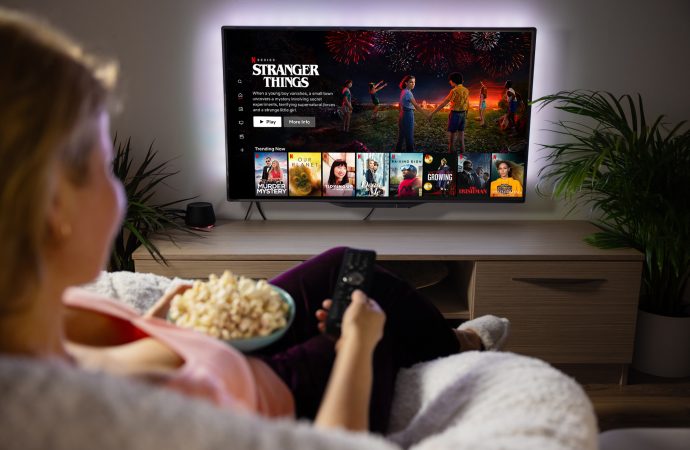Introduction In the past decade, streaming services have revolutionized the way we consume media. From Netflix and Hulu to Spotify and Apple Music, these platforms have not only changed how we access entertainment but also significantly influenced our consumer habits. This article delves into the multifaceted impact of streaming services on consumer behavior, examining how
Introduction
In the past decade, streaming services have revolutionized the way we consume media. From Netflix and Hulu to Spotify and Apple Music, these platforms have not only changed how we access entertainment but also significantly influenced our consumer habits. This article delves into the multifaceted impact of streaming services on consumer behavior, examining how they have redefined our expectations, preferences, and consumption patterns.
The Evolution of Media Consumption
1.From Physical Media to Digital Streams
Before the advent of streaming services, physical media like DVDs, CDs, and Blurays dominated the market. Consumers had to purchase or rent these items, which required physical storage and often came with limitations on availability and accessibility. The shift to digital streams has eliminated these barriers, offering instant access to a vast library of content without the need for physical storage.
2.The Rise of On Demand Culture
One of the most significant changes brought about by streaming services is the rise of on demand culture. Unlike traditional broadcast schedules, streaming platforms allow users to access content whenever they want. This shift has led to a more personalized and flexible viewing experience, aligning with the fast paced lifestyles of modern consumers.
Impact on Viewing Habits

Image by: Yandex.com
1.Binge Watching Phenomenon
The concept of binge watching consuming multiple episodes or even entire seasons of a show in one sitting has become a hallmark of streaming services. Platforms like Netflix and Hulu release entire seasons at once, encouraging viewers to watch at their own pace. This behavior contrasts sharply with the traditional model of weekly episode releases and has significantly altered how we engage with television content.
2.Personalized Recommendations
Streaming services leverage sophisticated algorithms to recommend content based on user preferences and viewing history. This personalization not only enhances the user experience but also influences consumer habits by introducing users to new genres, shows, and artists they might not have discovered otherwise.
Impact on Music Consumption

Image by: Yandex.com
1.Decline of Album Sales
The rise of music streaming services like Spotify and Apple Music has led to a decline in traditional album sales. Consumers now prefer to stream individual tracks or curated playlists rather than purchasing entire albums. This shift has impacted how artists release and promote their music, with a greater emphasis on singles and streaming metrics.
2.Accessibility and Discover ability
Music streaming platforms have democratized access to a vast library of tracks, making it easier for consumers to discover new artists and genres. Features like curated playlists, algorithm driven recommendations, and social sharing have enhanced the discoverability of music, shaping consumer habits by broadening their musical horizons.
Economic Implications
1.Subscription Models
The subscription based model of most streaming services has changed how consumers allocate their entertainment budgets. Instead of purchasing individual movies, albums, or TV shows, consumers pay a monthly fee for unlimited access to a broad range of content. This model offers cost efficiency and convenience, further entrenching streaming services in daily life.
2.Ad Supported Models
Many streaming platforms offer ad supported tiers, providing free access to content in exchange for viewing advertisements. This model has made streaming services accessible to a broader audience, including those who may not be willing or able to pay for a subscription. However, it also raises questions about consumer tolerance for ads and the balance between free and premium content.
Social and Cultural Impact

Image by: Yandex.com
1.Globalization of Content
Streaming services have facilitated the globalization of content, allowing consumers to access media from different cultures and countries. Shows like “Money Heist” from Spain and “Squid Game” from South Korea have gained international popularity, reflecting a growing trend of cross cultural media consumption.
2.Changing Social Interactions
The way we discuss and share media has also evolved with the rise of streaming services. Social media platforms have become integral to the viewing experience, with users sharing their thoughts and reactions in real time. This phenomenon has created a more communal and interactive media consumption experience, influencing how we engage with content and with each other.
Challenges and Criticisms
1.Content Overload
While the vast library of content available on streaming services offers numerous choices, it can also lead to content overload. Consumers may find it overwhelming to sift through endless options, leading to decision fatigue and potentially reducing overall satisfaction.
2.Data Privacy Concerns
The personalization algorithms used by streaming services rely on extensive data collection, raising concerns about user privacy. Consumers are becoming increasingly aware of how their data is used and are demanding greater transparency and control over their information.
Conclusion
Streaming services have undeniably reshaped consumer habits, offering unprecedented access to a diverse range of content while also introducing new challenges and considerations. As these platforms continue to evolve, their impact on consumer behavior will likely deepen, further transforming how we experience and interact with media.
By understanding these shifts, consumers and industry stakeholders can better navigate the everchanging landscape of media consumption, ensuring a more enriching and balanced experience for all.
















